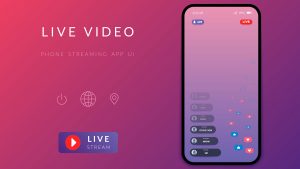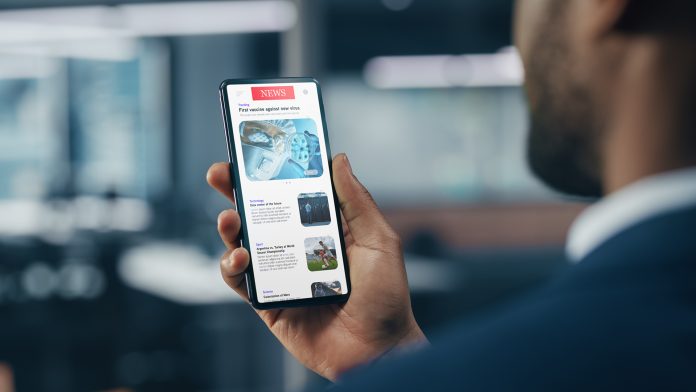Naomi Owusu, CEO of Tickaroo, discusses how the tech revolution has paved the way for smartphones and social media to become major news outlets.
Technology continues to play a tremendous role in shaping our daily habits. With mobile phones dominating every aspect of our lives, it’s no surprise that 39% of Brits turn to their devices for the latest breaking news – a trend likely to increase with our ever-growing tech revolution.
In fact, the average user spends almost four hours a day gazing at their screens.
Media outlets must adapt to a new challenge
With the rise of a mobile revolution, 26% of 18-34-year-olds now prefer news updates in short, bite-sized segments. kicker, Germany’s top sports news provider experiences almost twice as many monthly viewers on its mobile coverage as its desktop coverage.
This creates new challenges for today’s publishers and content creators as they must adapt to these evolving media habits to deliver accurate, short-form content for their target audiences.
As the online environment becomes oversaturated with endless data, information, negative news and more, users face sensory overload and digital dementia, forcing publishers to cut through the noise and deliver the most relevant, pressing information to their audiences.
Additionally, as the stream of online data increases, our attention spans are decreasing – 21% of readers spend less than two minutes reading an article.
As a tech revolution continues to reshape the media landscape, publishers will need to think outside of the box to identify ways to engage with and capture their key audiences – and live blogging is emerging as a critical tool to do so, creating more tailored and immersive experiences for audiences.
The tech revolution has paved the way for social media as a news outlet
In our smartphone-dominated world, social media has become increasingly influential in shaping how we consume information and news.
Live blogs mirror the behaviour that audiences have learned by scrolling through social media platforms. Research highlights that social media continues to rise as a primary news source, with 21% of UK adults turning to social channels for breaking news.
Given today’s consumer preference for bite-sized bits of information replicating the social media experience, live blogs have become a popular format that delivers the best of both worlds. Their ability to be curated by trusted news providers enables the audiences to receive news in a format that feels familiar yet prevents damaging doom scrolling.
These highly curated, bite-sized news updates are far more manageable for the reader to digest. A live blog has the look and feel of social media but with more control for editors and the ability to show broader views – and with far more authority.
The versatile live blog format also enables a unique storytelling aspect, allowing publishers to embed various elements, including text, videos, graphics, polls, audio clips, and integrated social media posts – to name just a few. These features allow editorial teams to look beyond plain text to paint a unique picture and enable storytelling in a more curated fashion without compromising speed or accuracy.

This flexible format also enables publishers to cover a broader array of events and stories, from fast-paced sporting events to helpful travel content, to up-to-the-minute election coverage to Taylor Swift tour coverage.
Smartphones are making news more accessible and interactive
Smartphones enable today’s news readers to access their news quickly and effortlessly. Users can swiftly get the most relevant, pressing updates without searching through streams of additional information.
Readers are presented with a continually updated, top-line understanding of the news that’s relevant to them. For example, as the OceanGate submersible captured headlines across the globe, New Zealand-based publisher Stuff ran a live blog featuring chronological updates and varied expert insight around the event from its beginning to its tragic end, providing readers with a comprehensive overview of information while enabling audiences to see the whole picture.
Different user needs can be covered with a live blog by tapping into their need for connecting, updating, understanding, and feeling when it comes to consuming content.
This format allows interactive media like surveys, quizzes, and live commenting to be embedded into the publisher’s live blogs to encourage direct interaction with readers. By responding to and engaging with varied interactive content, readers remain entertained and gain a sense of connection to the stories and brand.
Live blogs allow publishers to capitalise on these communal elements, enabling publishers to cater to more interactive audiences and creating a significant opportunity to garner a more profound sense of community.
As the Women’s World Cup was heating up over the summer, Stuff’s live blog covered the matches and featured comment opportunities for followers to chime in after significant milestones such as goals and wins.
Other publishers use these interactive features to engage experts to discuss topics like the cost of living crisis or pandemic in the form of Q&As. Readers can ask their questions directly in the comments, and the featured expert can answer the audience’s concerns directly.
With the rapid tech revolution and the rising popularity of social media platforms, news consumption habits have changed dramatically, forcing media outlets to discover innovative ways to keep consumers tuned in.
Live blogs and the unique visual and interactive features within their formats support publishers to position themselves as engaging, easy-to-understand, and entertaining news sources – fully equipped to leverage today’s mobile fascination while capturing the attention of today’s readers.









